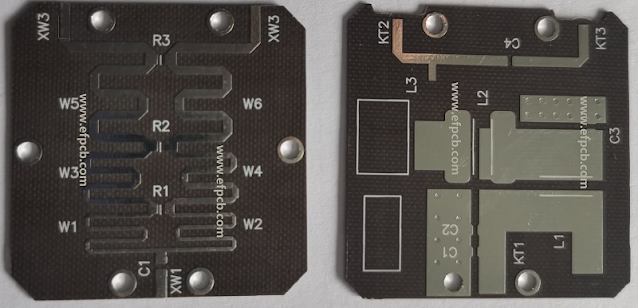Designing Radio Frequency PCBs: Optimizing for High-Frequency Signal Transmission
Radio Frequency (RF) printed circuit boards (PCBs) are
specialized circuit boards designed to transmit or receive radio signals. They
are used in a wide variety of applications, ranging from mobile phones and GPS
systems to medical devices and military communication equipment. Radio frequency PCB are critical components in the communication systems of modern
technology, and their performance is crucial for the efficient operation of
these devices.
RF PCBs are designed with special materials and layouts
that are optimized for high-frequency signals. The most commonly used substrate
materials for RF PCBs are Rogers, Teflon, and FR-4. Rogers is a
high-performance substrate material that has a low dielectric constant and loss
tangent, which allows it to maintain high signal integrity at high frequencies.
Teflon, also known as PTFE (Polytetrafluoroethylene), is a low-loss material
with excellent thermal stability and chemical resistance. FR-4 is a standard
substrate material that is widely used in PCB manufacturing due to its low
cost, but it is not ideal for high-frequency applications.
Radio frequency PCB also
requires careful design considerations to minimize signal loss, noise, and
interference. The layout of the board must be optimized to ensure proper
impedance matching between the components and the transmission lines. The
transmission lines must also be properly shielded to prevent electromagnetic
interference (EMI) and radio frequency interference (RFI). Additionally, the
board must be designed with minimal vias and ground planes to reduce the
parasitic capacitance and inductance that can degrade the signal quality.
RF PCBs are also subject to strict manufacturing
tolerances and quality control standards. The thickness of the substrate, the
copper layer thickness, and the trace width and spacing must be precisely
controlled to ensure consistent performance. Any deviations from the design specifications
can lead to signal loss, reflections, and distortion.
In conclusion, radio frequency PCB is a specialized circuit board that is optimized for high-frequency signal transmission and reception. They are critical components in modern communication systems and require careful design and manufacturing considerations to ensure proper signal integrity and performance. The choice of substrate material, the layout of the board, and the manufacturing tolerances must be carefully controlled to ensure consistent and reliable operation.




Comments
Post a Comment